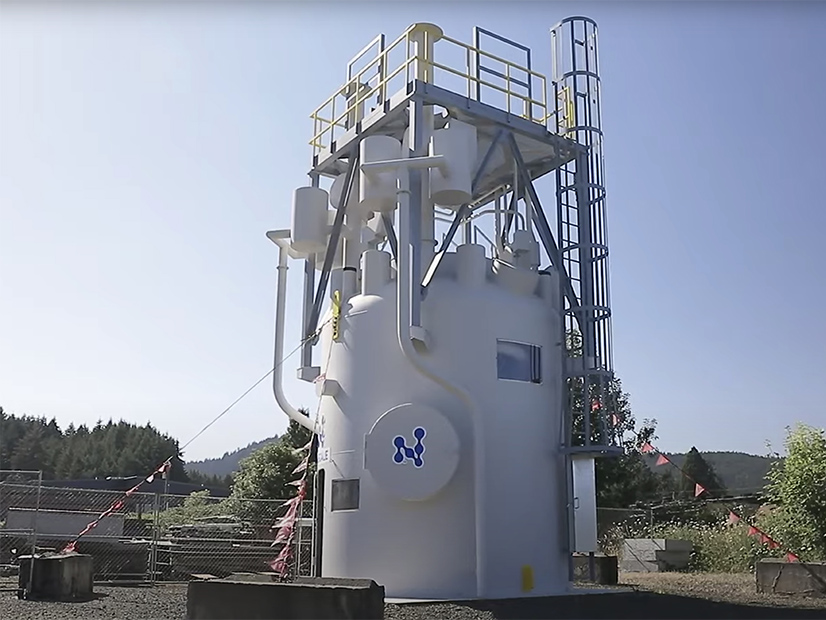NuScale Power Corp. on Jan. 8 announced a change in focus from research to commercialization, with a resulting 28% reduction in its full-time workforce.
The developer of small modular reactor (SMR) technology said the strategic shift would yield an annual savings of $50 million to $60 million, minus approximately $3 million in personnel severance costs this quarter.
The announcement came two months to the day after NuScale reported cancellation of the Carbon Free Power Project, which was to be the company’s first operational SMR in the United States. (See Pioneering NuScale Small Modular Reactor Project Canceled.)
The pioneering effort was a collaboration between NuScale and Utah Associated Municipal Power Systems. It called for six 77-MW modules at the U.S. Department of Energy’s Idaho National Laboratory, the first of them targeted to come online in 2029. However, it appeared unlikely to gain sufficient subscription to be viable.
NuScale CEO John Hopkins said during a Nov. 8 conference call with industry analysts that the effort and expense the Oregon-based company had poured into the project was not lost, but an investment that will benefit future customers.
He said in a Jan. 8 news release that NuScale was making the workforce reductions and strategic changes to better position itself commercially, financially and strategically.
“Our U.S. Nuclear Regulatory-approved, industry-leading SMR technology is already many years ahead of the competition,” he said. “Today, commercialization of our SMR technology is our key objective, which includes near-term deployment and manufacturing.”
He said the company workforce would shrink by 154 full-time employees, or 28% of the 556-person workforce cited in NuScale’s 10-K annual report filed in March 2023.
NuScale’s 50-MW power module in January 2020 became the first SMR design certified by the U.S. Nuclear Regulatory Commission.
SMRs hold promise as a cleaner replacement for fossil fuel generation and a less expensive alternative to traditional nuclear reactors. Numerous cost, safety and regulatory hurdles still must be cleared before that potential is achieved.




